What is bamboo wallpaper?
Bamboo wallpaper is an environmentally friendly and completely natural finishing material that is made from different parts of the bamboo trunk. The material "breathes", "is not afraid" of contact with water and is easy to clean. Considering the environmental friendliness of bamboo wallpaper, they do not cause allergic reactions and are completely safe for children.
Production technology
The canvases are made from an unpainted bamboo stem, which, after processing, is attached to a fabric base. Different parts of the stem are used to obtain different visual effects. They are preliminarily subjected to splitting and processing, after which they "sit" on a gauze base.
Characteristics
Wallpaper linen can have different parameters; for general convenience, rolls are produced with certain dimensions.
| Web width (m) | Blade length (m) | Bamboo lamella width (mm) |
|---|---|---|
| 0,9-2,7 | 5-15 | 3,5-20 |
Views
From the outside of the trunk
Wallpaper is made from the top (outer) layer of the bamboo stem. On the canvas, the texture and patterns of the trunk are clearly distinguished, the joints and structure are visible. There are several types of surface color: yellow, green, chocolate, tortoiseshell and pistachio.
On the picture city apartment in a marine style. The design is refreshed by turquoise furniture and decor.
From the inside of the barrel
The canvas is obtained by processing the inner parts of the stem. The planks are carefully processed and polished to obtain a perfectly flat surface. After processing, the lamellas are fixed on a gauze base.
Wallpaper from the inside is also divided into types by color: light, dark, wenge. The light surface is natural, unpainted bamboo. To obtain a dark canvas, bamboo is tinted by heating it to 60 degrees. To obtain a wenge tone, the bamboo stems are dyed. In addition, the surface can be varnished.
Combinations of bamboo and cane
The design can combine canvases from different materials. The plants are visually similar, but have different characteristics. Reed wallpaper is resistant to light, but more vulnerable to moisture. Bamboo and reed can be in the form of different canvases, or they can be combined in one, alternating lamellas.
Pros and cons
Any finishing material has advantages and disadvantages. Taking into account the nuances and features of bamboo wallpaper, you can create not only a beautiful, but also a practical design.
| pros | Minuses |
|---|---|
| Eco-friendly material | High price |
| Long service life | The canvas is heavier than normal fights and requires special glue |
| Easy to clean | Fade in direct sunlight |
| Good tolerance to temperature changes | To cut the blade, the help of power tools is needed. |
Photos in the interior of the rooms
In the interior of the hallway
The most practical finishing material for the corridor and hallway.Considering the possible frequent contact with clothing and shoes, bamboo wallpaper will be a good solution.
They are easy to keep clean, just wipe the dirt with a slightly damp cloth. Bamboo works well with plain surfaces, plaster and floral wallpaper.
In the kitchen
In the kitchen, bamboo wallpaper is suitable for finishing both the dining area and the work area.
On the picture spacious kitchen-dining room. The decoration is made of natural materials: bamboo wallpaper, stone, wood.
For finishing the area of the kitchen backsplash, it is worth providing for the presence of protective glass. It is necessary in order to protect against surface contamination, as well as for safety purposes.
On the balcony or loggia
A good way to beautifully decorate a balcony or loggia. By complementing the finish with some decorative elements, you can get a boring and warm interior.
On the picture balcony with an unusual way of finishing. The installation of bamboo wallpaper is made according to the mosaic principle, contrasting white moldings emphasize the non-standard arrangement of the canvases.
In addition, bamboo wallpaper will become an additional noise-insulating layer and, unlike conventional paper wallpaper, it will not fade or peel off at high temperatures.
In the bedroom
Bamboo canvases will give the bedroom the coziness and warmth of a tropical house. They can be combined with monochromatic wall decoration, in which case the design will be calmer, or they can completely decorate the room with them.
On the picture bedroom in a nautical style. Colors and multiple details support the theme of the room.
An interesting interior solution will be a partial finish, for example, a wall above the head of the bed or a doorway.
In the children's room
A children's room will become much more interesting if it is decorated thematically, for example, in a marine, tropical or Asian style. Cute details will complete the look of the room.
In addition to the aesthetic side, bamboo wallpapers are completely safe for a child.
On the picture children's room in the Japanese style. The decoration and filling of the room are made of natural materials.
In the hall
By using bamboo finishes in different color variations, you can create a completely different look for your living room.
The light-colored canvases will adorn classic, modern and nautical designs. Dark wall decoration is more suitable for a modern trend, and also looks good in contrast with a light tone.
In the bathroom and toilet
Bamboo trim may well be in the toilet, the material interacts well with moisture and does not distort over time.
However, for places where contact with water is direct, it is still worth choosing a tile.
Color spectrum
Ivory
The neutral, lightest shade of bamboo linen. The color will adorn both the delicate classic interior and the stylish modern design. Matches well with other material and color finishes.
On the picture stylish living room in a modern style. The accent wall is finished with bamboo wallpaper and a built-in biofireplace.
Tortoiseshell
The color is called tortoiseshell, since the surface of the canvas has brown spots similar to tortoiseshell. The background can be milky, brown or green. It is better to combine wallpapers of this color with other, calmer monochromatic coatings, otherwise the interior may turn out to be clumsy.
Wenge
The combination of a beautiful dark color and interesting texture will make the interior stylish, but not pretentious. Wenge harmonizes well with light colors, for example, white or beige, and also looks good as the main color for well-lit rooms.
Green
Green bamboo is reminiscent of olive in color. The shade is calm, not bright, looks good in a room with windows facing south. A good option for decorating a nursery, kitchen or living room, the color soothes and has a beneficial effect on human psychology.
Brown
A warm shade can have a different tone from light to dark.Suitable for interior decoration in modern, Asian and ethnic style.
On the picture dining room in an eco-style. The decoration and furniture are made mainly from natural materials.
What can be combined with?
Cork Coated
Natural materials are in harmony with each other with a warm color, in addition, both coatings are environmentally friendly and do not cause allergic reactions.
With other types of wallpaper
The interior can be made brighter or, on the contrary, softer with a combination of other wallpapers. Different types of coatings allow you to choose the best option that will fit a given room. For example, paper wallpapers are suitable for a bedroom or nursery, non-woven wallpapers for a living room, and vinyl wallpapers for a kitchen.
With wood panels
Natural eco-friendly coatings will support the overall theme in the interior of the room.
With plaster
Plastered walls will make the design of the room "quieter". Bamboo canvases will stand out against the background of plaster. A good combination to highlight an accent wall or other areas.
With stone or brick
Brick and stone, in addition to the aesthetic side, also performs a protective function, protecting the corners from abrasions and dirt.
Presentation in various styles
Japanese style
Bamboo trees are inextricably associated with Japan or China. Japanese style is laconic and not pretentious. The details are minimalistic and not bulky. Bamboo wallpaper can frame both all walls and highlight some areas of the room. The design will be complemented by decorative pillows with themed pictures, a group of small paintings and other decor items. The bamboo finish works well with themed wallpaper.
Eco style
Eco-style is distinguished by the maximum filling of the interior with natural natural materials, from finishing to pieces of furniture and decor. Bamboo wallpapers fully correspond to the peculiarities of the style and successfully emphasize it. Eco-style creates a soothing and cozy atmosphere that allows you to abstract from the daily routine of the city.
On the picture compact kitchen fully finished with bamboo wallpaper. The eco theme in the interior is supported by curtains, vases and a rack made of natural bamboo.
Ethno-style
Ethnic motives in the interior of the house have a special mystery and charm. Ethno-design is suitable for decorating a bedroom or living room. Any shade of bamboo will look harmonious in combination with ethnic pieces of furniture, for example, with African motives, unusual decor and dim lighting.
Finishing non-standard surfaces
Ceiling
Decorating the ceiling with bamboo wallpaper will create the atmosphere of a tropical house. High ceilings can be complemented by wood beams or a ceiling fan. If the room does not have high ceilings and has standard dimensions, but the bamboo covering can be combined with a stretch or suspended ceiling of a light shade.
Arch
The arch can be designed in different variations, for example, finishing the end of the arch, creating an arch from wallpaper, or complete wall decoration, including an arched opening. Any option will make the interior more interesting and not overload it.
Doors
Bamboo wallpaper on doors can overlap with other trim pieces or furniture. In addition, in this way you can "refresh" the old door, correcting the traces of time.
How to glue?
How to glue?
There are several types of glue that are suitable for bamboo wallpaper. Among them there is no glue for ordinary wallpaper, it is too weak for this material.
- The first option is liquid nails, a reliable method, but it has disadvantages in the form of an unpleasant odor and substances harmful to humans.
- PVA glue is able to hold the wallpaper, but this will require a lot of effort, since it takes a long time to set. In addition, for reliability, it is worth using self-tapping screws or nails.
- Acrylic glue, otherwise called "crazy sticky", has no direct purpose for bamboo wallpaper, but it copes well with them, is safe and easy to work with.
- There is also a special glue for bamboo linen and cork.
How to cut?
The material is simply cut across the canvas; a wallpaper or clerical knife will be enough. To separate the roll along you will need a tool, it can be a jigsaw with a saw for metal or a hacksaw for metal.
Step-by-step gluing instructions
The process of gluing bamboo wallpaper can be divided into several stages.
-
Material preparation. First you need to prepare and cut into fragments of the desired size of the canvas. This will require a wallpaper knife or jigsaw, depending on where you cut.
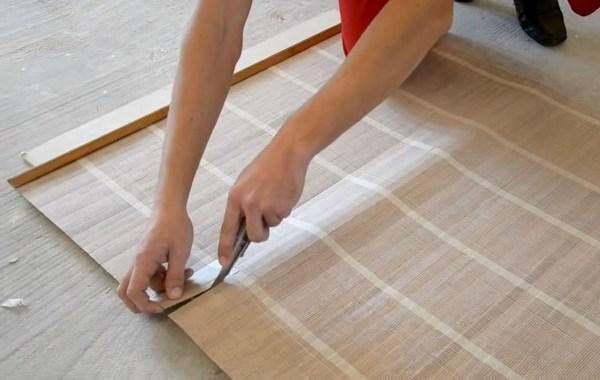
- Preparing the walls. Surfaces do not require careful preparation, since the bamboo canvas masks fine irregularities well. However, old wallpaper and plaster must be removed.
-
Glue is applied. Using a spatula, the adhesive is distributed along the wall, and then on the back of the wallpaper. The composition is applied to a dense part of the fabric, paying special attention to the edges. Within 8-10 minutes, the glue should be absorbed into the surface, after which you can start gluing.

-
Sticking. A piece of wallpaper is applied to the wall by snapping, after which it is removed. After a few minutes, the glue is absorbed and the canvas is pressed against the wall again, ironing it with a soft roller in the direction from the ceiling to the floor. Excess adhesive is removed with a cloth.
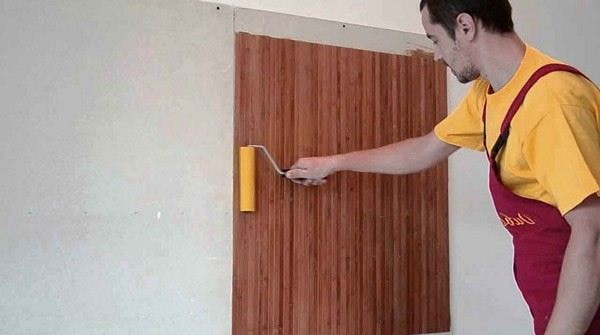
Video tutorial
Cleaning and maintenance
The material does not require special and complex maintenance.
- In case of dirt and to maintain cleanliness in the house, it is enough to use a damp cloth, vacuum cleaner or soft brush.
- Avoid using hard brushes, highly concentrated liquids and abrasive substances.
- It is convenient to use special detergents designed to care for bamboo surfaces.
Photo gallery
Interior decoration with natural materials is becoming more and more relevant, bamboo canvases have good properties, an unusual texture and a wide variety of colors. The design can turn out to be restrained or, on the contrary, attracting attention. Below are photo examples of the use of bamboo wallpaper on the walls in rooms for various functional purposes.


 10 practical tips for arranging a small kitchen in the country
10 practical tips for arranging a small kitchen in the country
 12 simple ideas for a small garden that will make it visually spacious
12 simple ideas for a small garden that will make it visually spacious
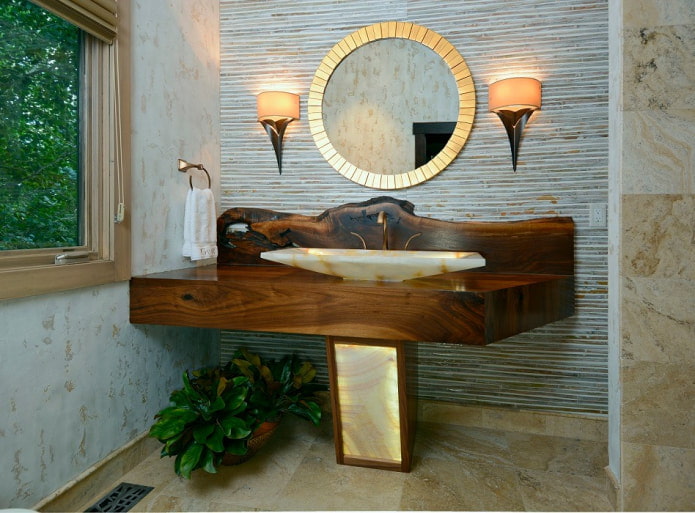
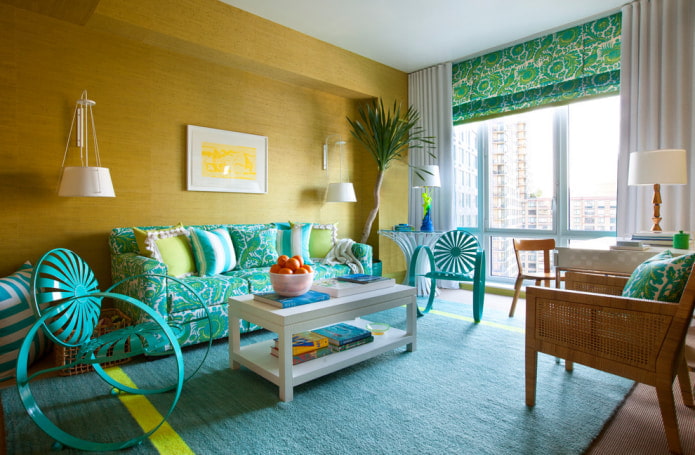
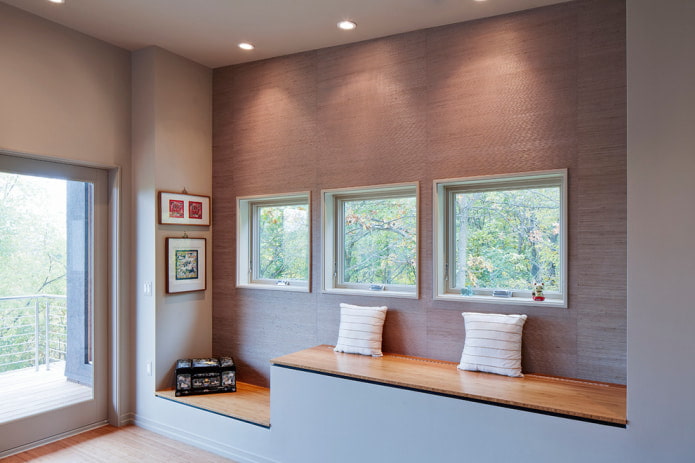
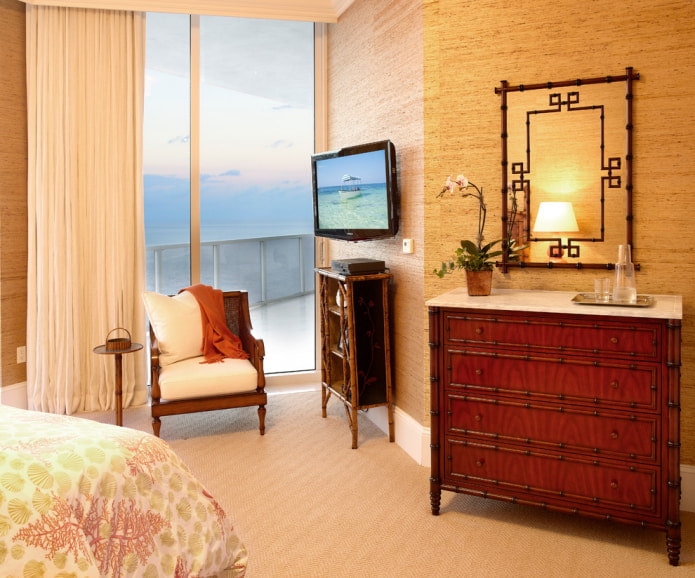
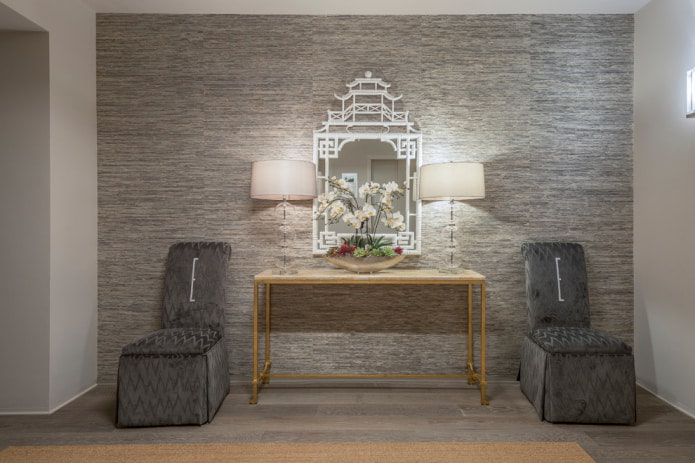
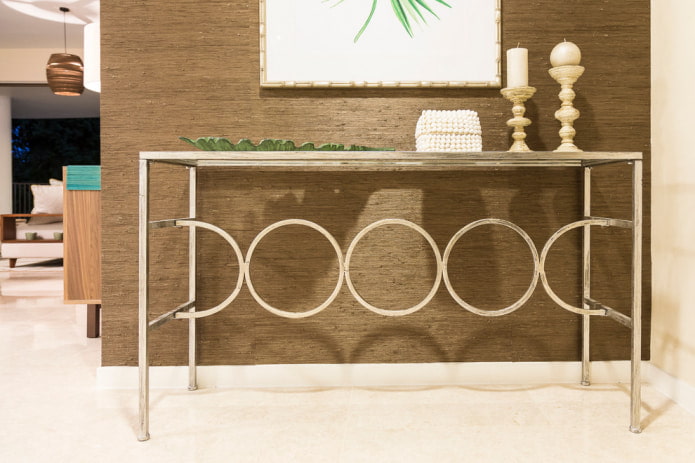

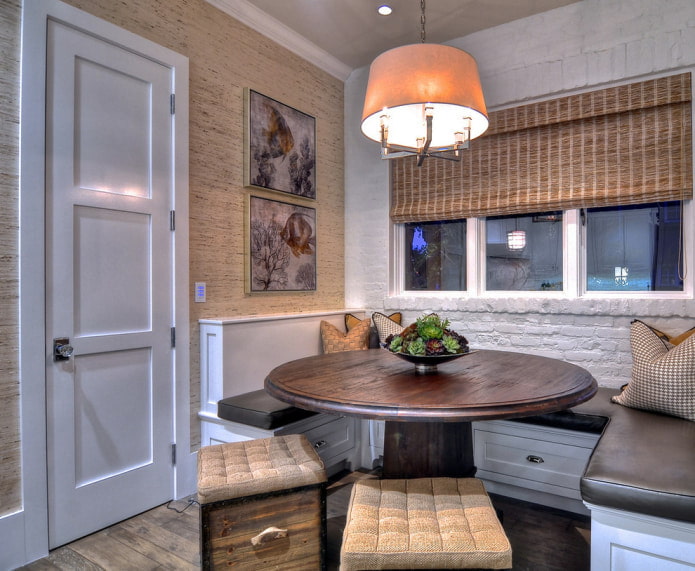

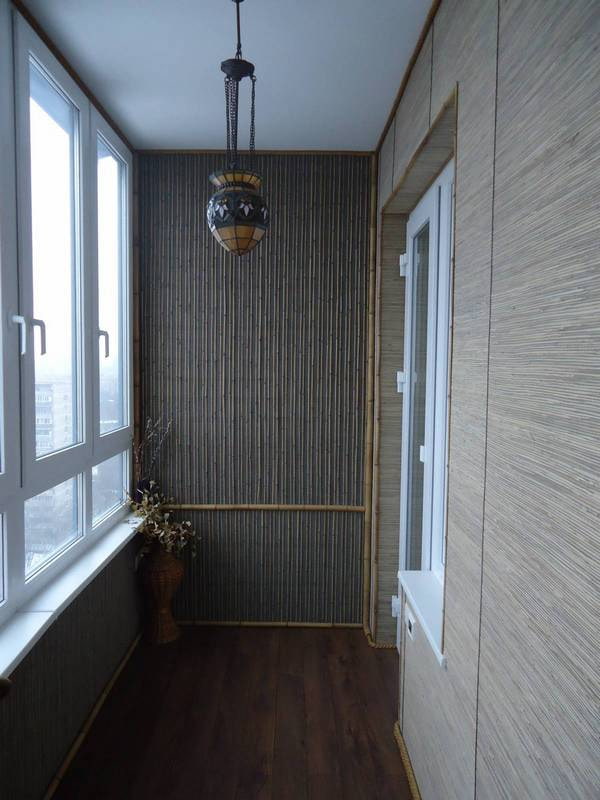
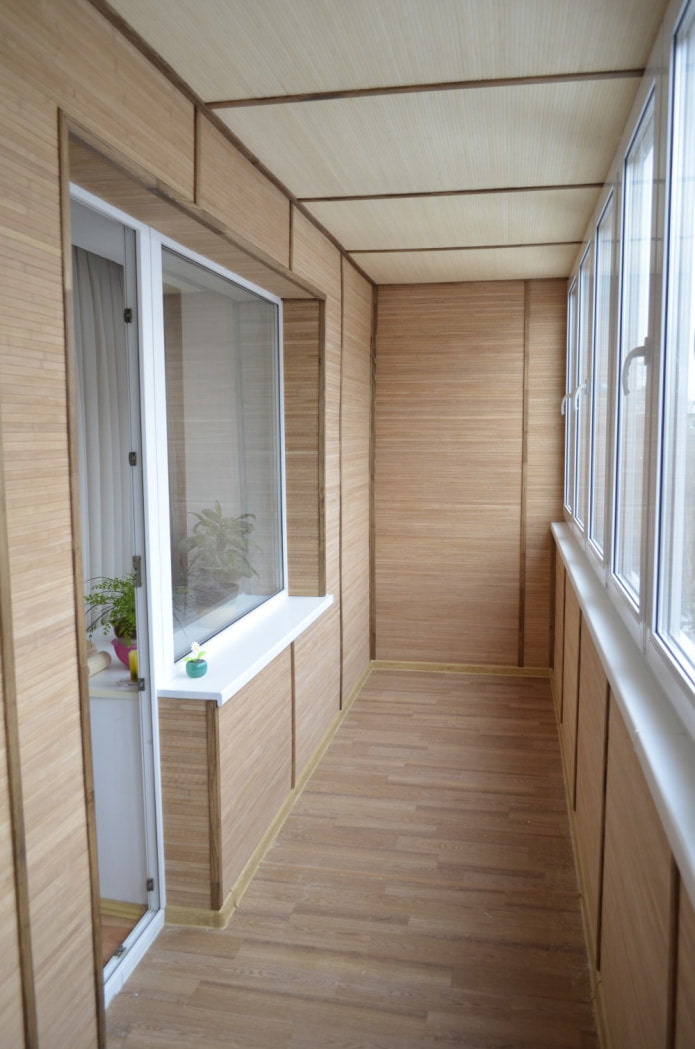
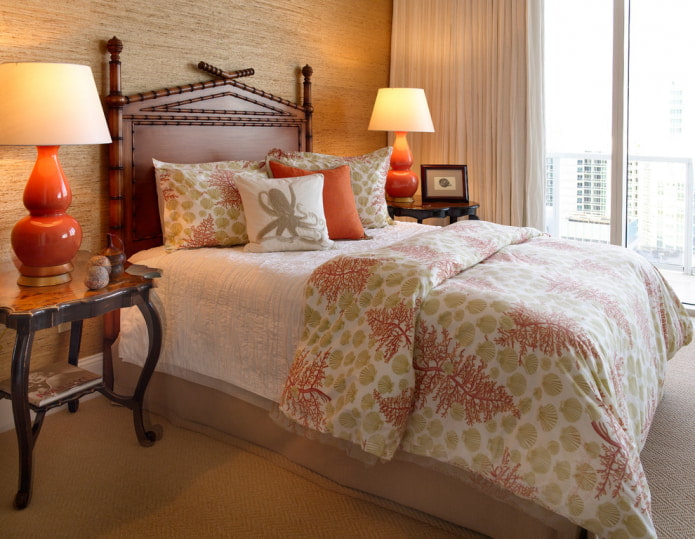
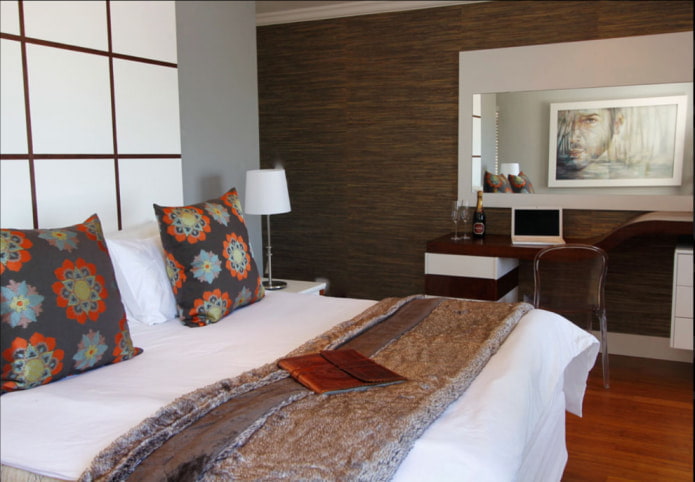
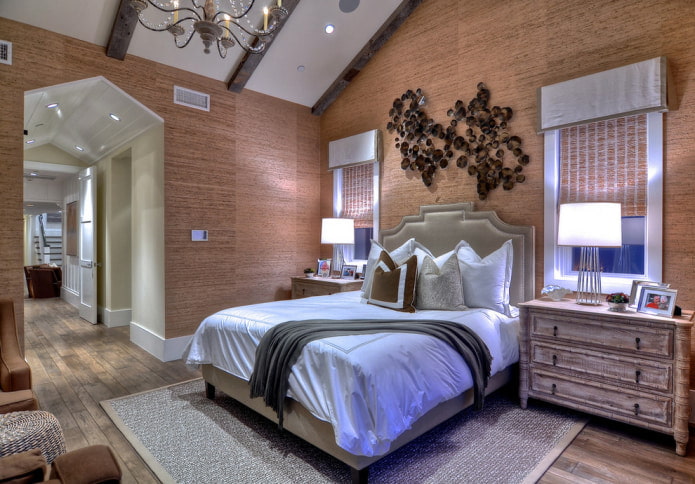
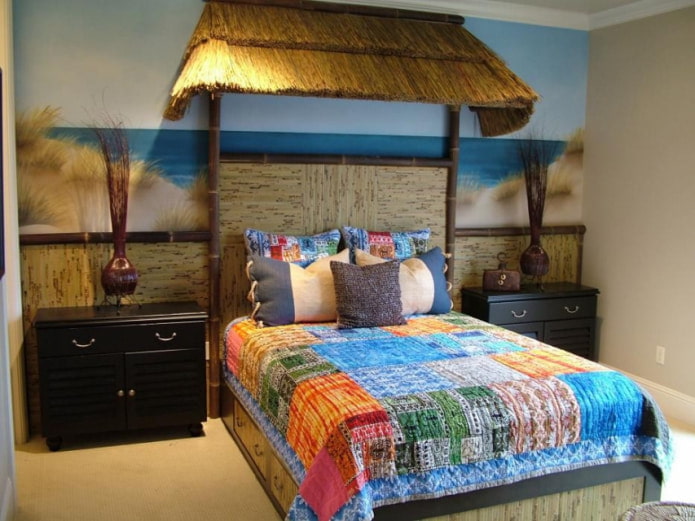
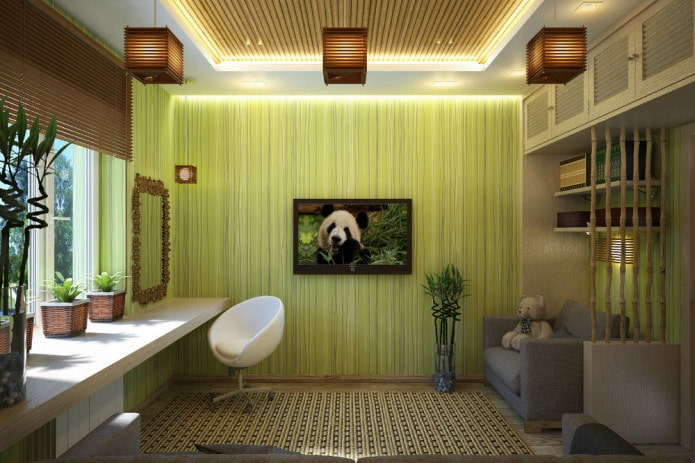
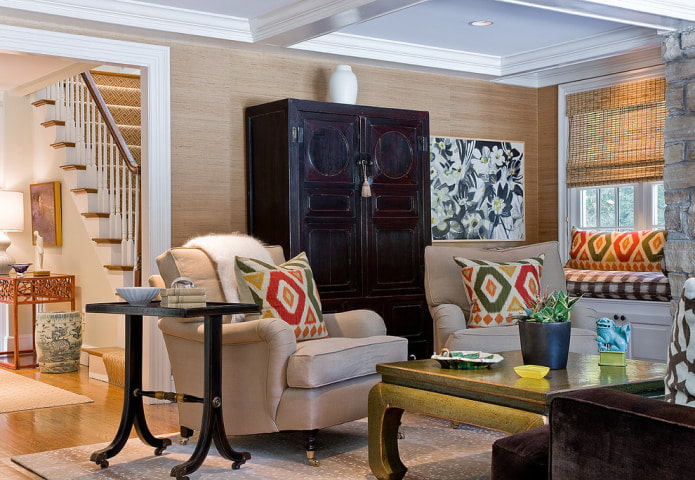
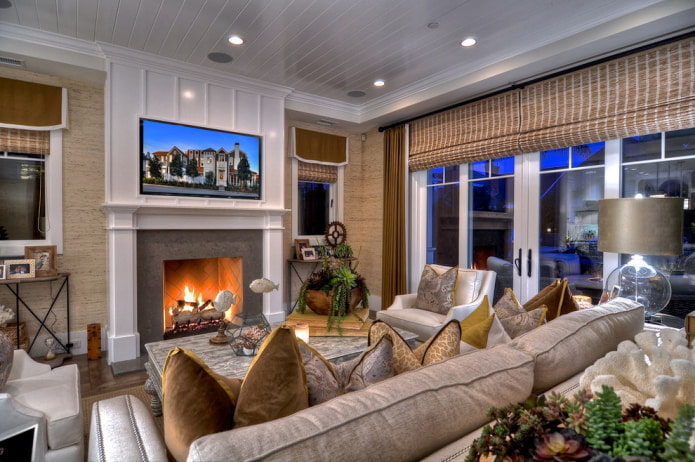
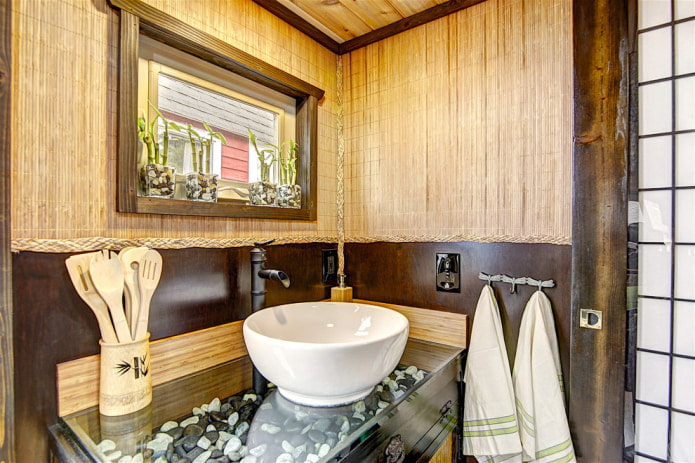


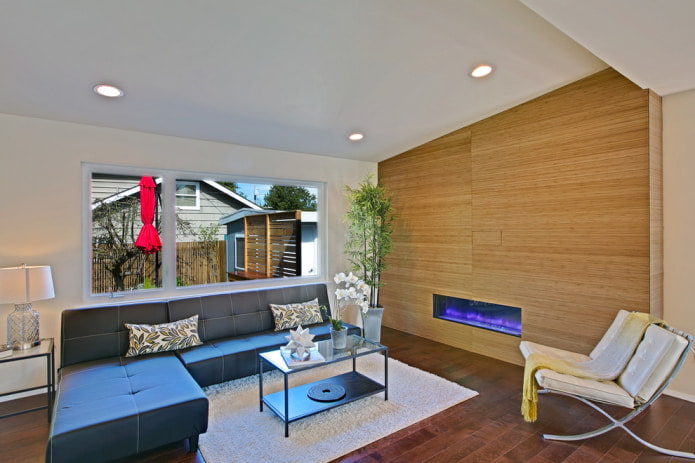

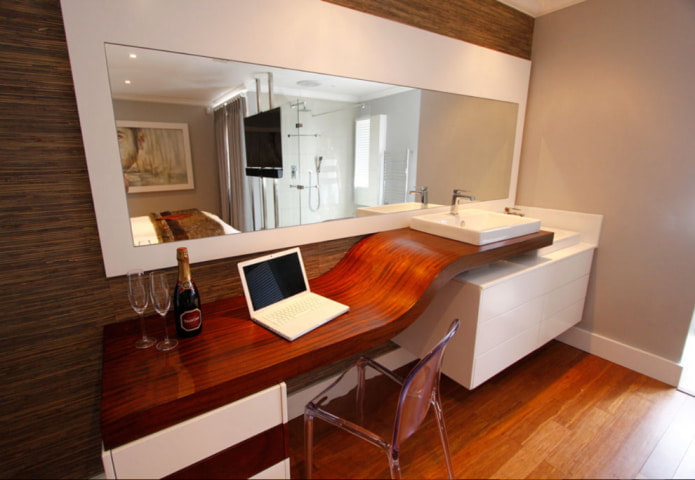
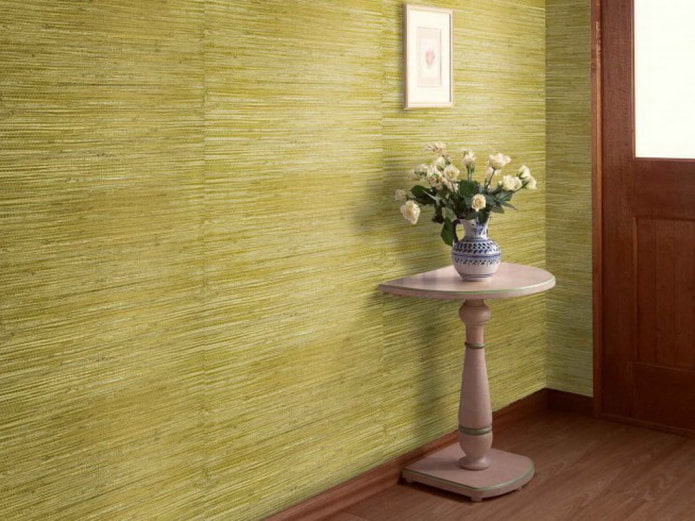

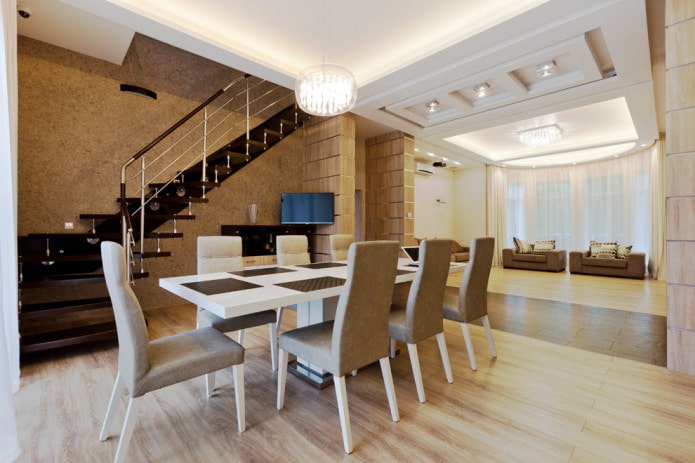
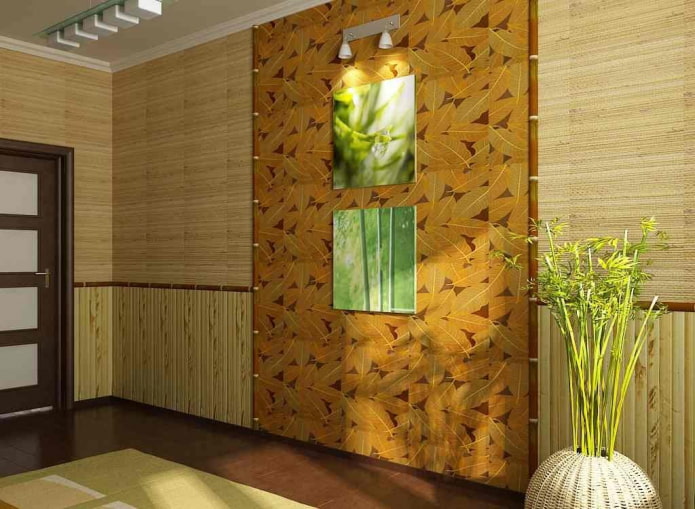
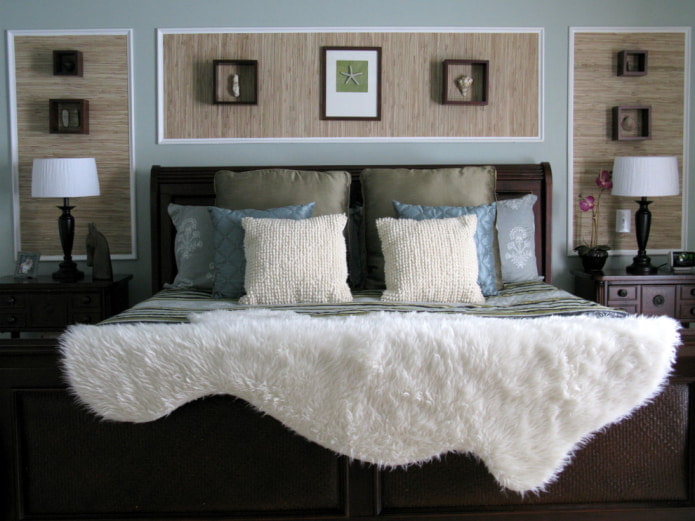
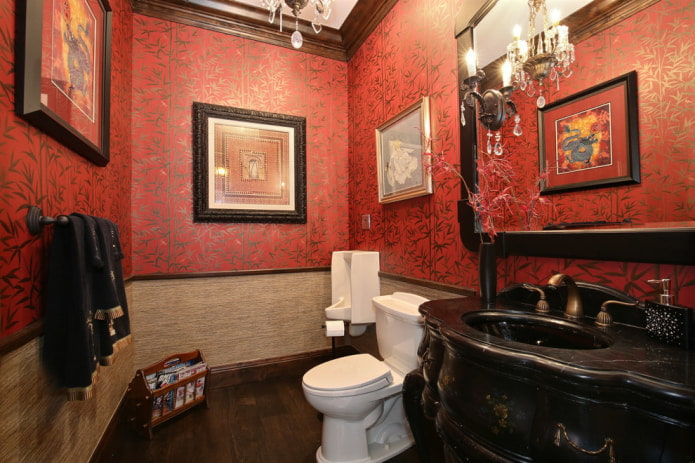
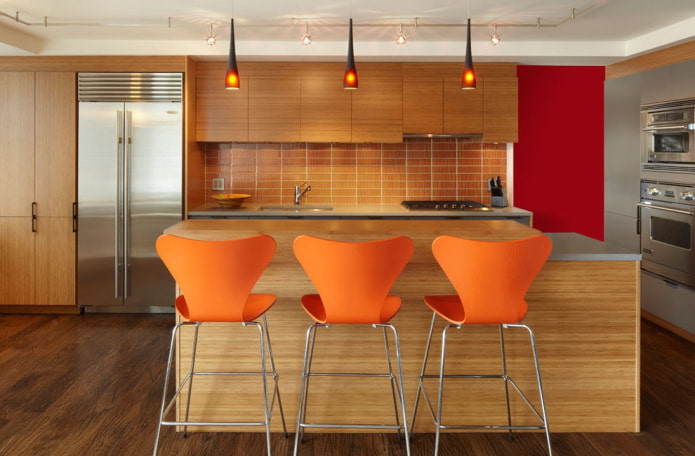

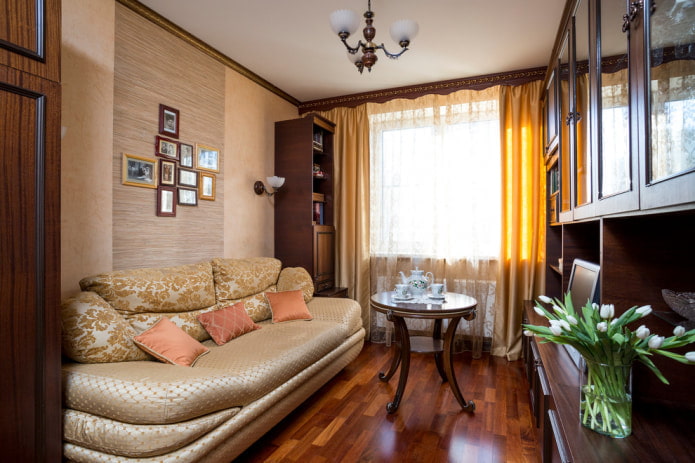
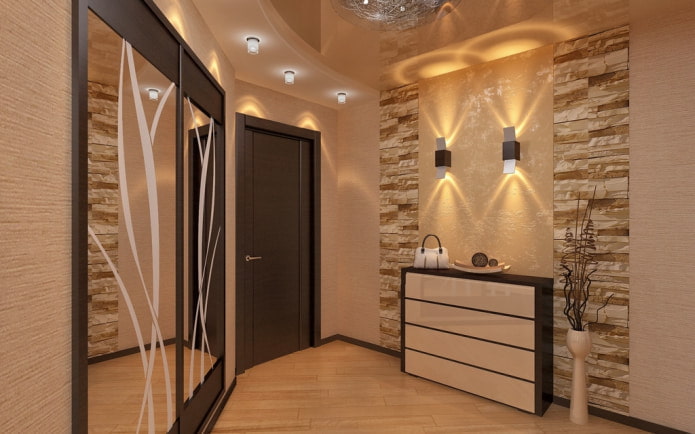

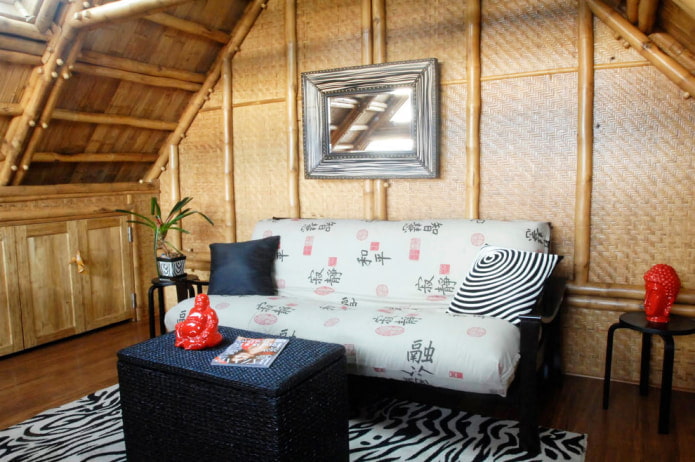
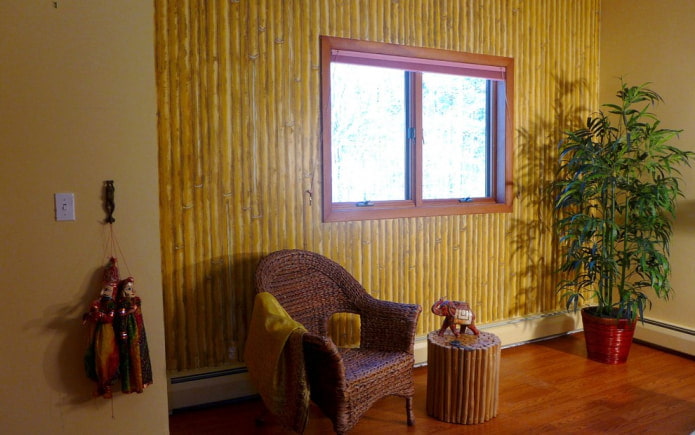
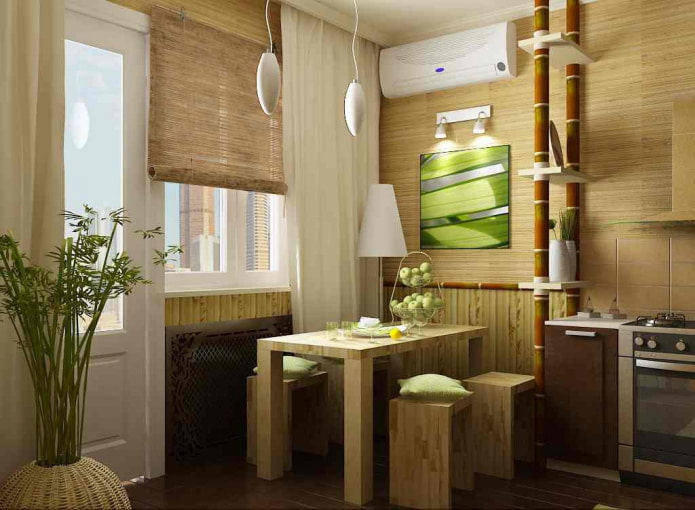
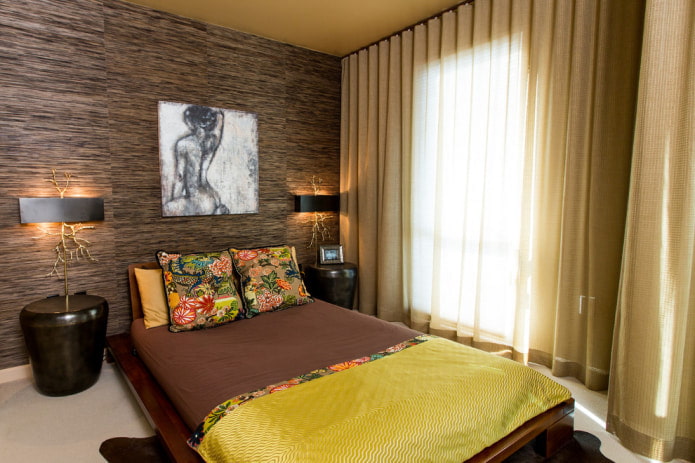
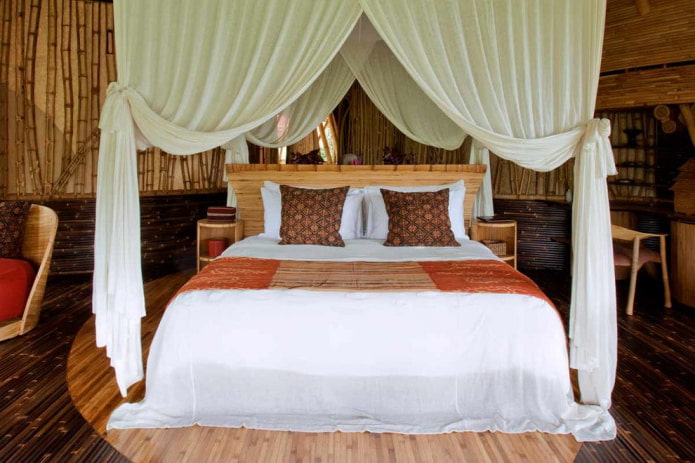

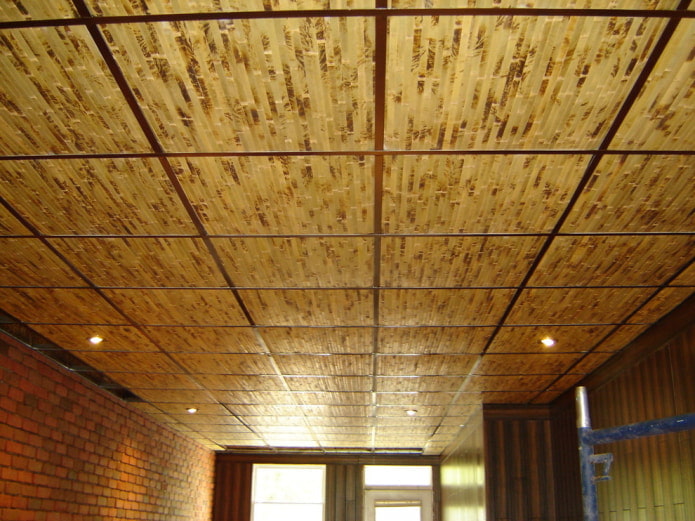
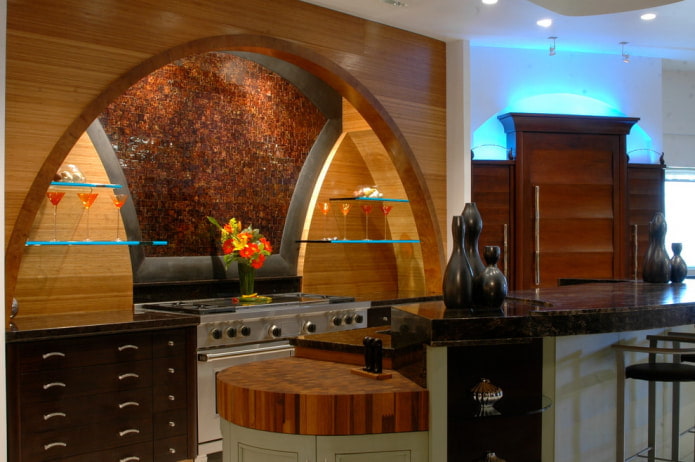

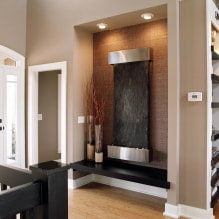
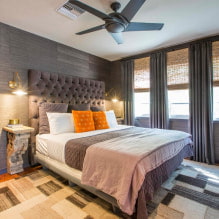
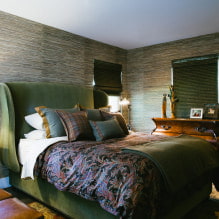
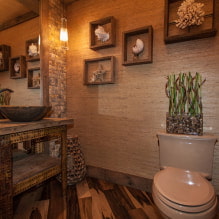
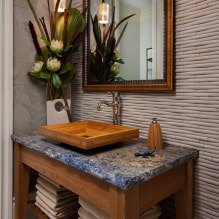
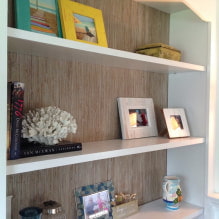

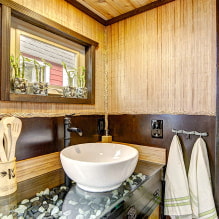
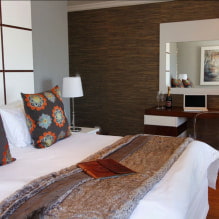
 13 bad habits a good housewife shouldn't have
13 bad habits a good housewife shouldn't have 24/7 home cleanliness - 4 secrets for the perfect housewife
24/7 home cleanliness - 4 secrets for the perfect housewife 6 hotels in Sochi that will give odds to the promoted foreign hotels
6 hotels in Sochi that will give odds to the promoted foreign hotels Top 10 interior design trends 2020
Top 10 interior design trends 2020 Rating of cheap TVs with Smart-TV
Rating of cheap TVs with Smart-TV New Year's LED garlands on AliExpress - we disassemble while it's hot, so that it's bright at home
New Year's LED garlands on AliExpress - we disassemble while it's hot, so that it's bright at home